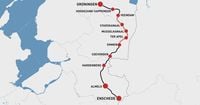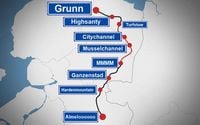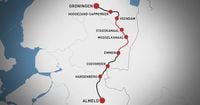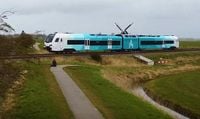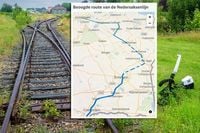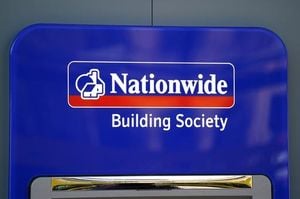The Nedersaksenlijn is officially on track, with the Dutch cabinet allocating nearly 2 billion euros for the construction of the railway line connecting Groningen, Emmen, and Enschede. The announcement was made on April 16, 2025, during the release of the Spring Memorandum, which outlines significant infrastructure investments.
This ambitious project will include the construction of approximately 30 kilometers of track between Emmen and Veendam, facilitating a direct rail connection from Groningen to both Emmen and Enschede. This development is seen as a pivotal enhancement of public transport in the northeastern region of the Netherlands.
According to the coalition party BBB, the funding for the Nedersaksenlijn will come from a larger 3.4 billion euro pot that was originally reserved for the Lelylijn, a proposed railway line connecting Groningen and Lelystad. This shift in funding has raised questions about the future of the Lelylijn, but BBB representatives have assured that it will not be scrapped. They stated, "There must be another reservation through the Development Strategy for Large-Scale Infrastructure." This reassures supporters of the Lelylijn, although the details remain unclear.
Roel Barkhof, the chairman of the Nedersaksenlijn Foundation, expressed his surprise at the funding announcement, stating, "We were completely surprised by the news this morning. It started with disbelief and ended in total euphoria. We sent each other messages asking, 'Are you reading the same thing I am?'" Barkhof noted that the organization had been advocating for the railway line for years and had recently feared that funding might be diverted elsewhere, particularly towards defense spending.
He added, "This brings so much with it. Consider the further development of Ter Apel and the renovation of the station area in Stadskanaal. This news is incredibly uplifting for us." The Nedersaksenlijn is expected to drive economic growth in the region, with plans for housing, education, and infrastructure development along the route.
Westerwolde's municipal official, Henk van der Goot, hailed the announcement as a "fantastic breakthrough," emphasizing its potential to improve accessibility and create job opportunities in the area. "The Nedersaksenlijn will not only enhance our region's connectivity but will also open new avenues for tourism and quality of life for our residents," he remarked.
However, not everyone is celebrating. The passenger association Rover expressed concerns about the funding source for the Nedersaksenlijn. Rover director Freek Bos stated, "While it is great that funding for the Nedersaksenlijn has been secured, it is unfortunate that this comes from the Lelylijn fund. Furthermore, while the railway may be built, this funding does not guarantee that trains will run, especially as the cabinet is cutting contributions that finance train operations. For us, the glass is still half empty."
In addition to the Nedersaksenlijn funding, the cabinet has also earmarked 100 million euros to address the bottleneck at Meppel, a critical junction that often experiences traffic disruptions affecting northern train services. This allocation aims to enhance capacity at the Meppel station by adding an extra platform and making necessary adjustments to the track layout. Currently, there are only two tracks between Meppel and Zwolle, which limits the flow of train traffic.
As the region anticipates the benefits of the Nedersaksenlijn, the focus remains on ensuring that the Lelylijn project is not adversely affected by this funding shift. The provincial governments of Drenthe and Groningen are keen to see both projects developed in tandem, integrating housing and economic growth strategies across the northern provinces.
The announcement of the Nedersaksenlijn represents a significant step forward for public transport in the region, promising to enhance connectivity and stimulate economic development. With the cabinet's commitment to this project, the future of railway travel in northeastern Netherlands looks brighter than ever.
As plans move forward, stakeholders from various sectors will be keeping a close eye on the developments, ensuring that the benefits of the new railway line are fully realized while safeguarding the interests of other vital infrastructure projects.
